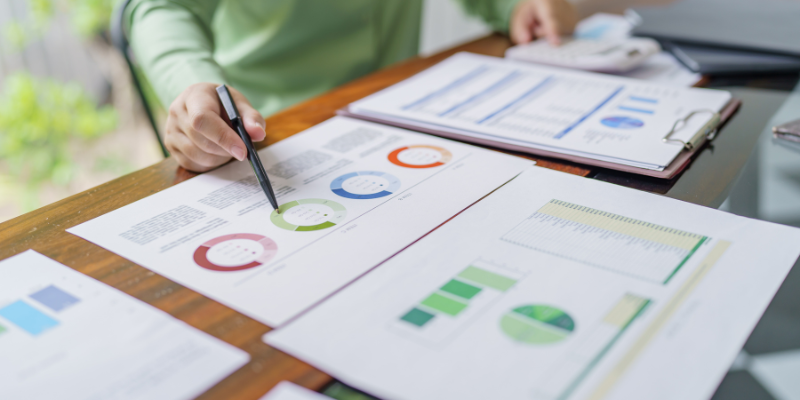Les obligations vertes ou Green Bond expliquées simplement

Les obligations vertes, ou green bonds, prennent de plus en plus de place dans le paysage financier.
En France, comme à New York ou à Washington, elles attirent les entreprises, les États, les institutions publiques, mais aussi de nombreux autres groupes d’entreprises. Objectif : financer des projets à impact positif, notamment dans l’énergie, le transport ou le développement durable.
Ce type d’investissement permet de soutenir la transition énergétique tout en garantissant une certaine rigueur dans la gestion des fonds. Les obligations vertes respectent en général des critères ESG stricts, avec des références internationales reconnues, comme celles de la Banque mondiale ou de la Caisse des Dépôts, qui définissent précisément les projets éligibles et les données à collecter pour assurer un suivi transparent.
En Europe, des acteurs comme EDF, le Groupe SNCF ou des groupes privés d’entreprises publient régulièrement des rapports pour rendre compte de l’usage des fonds levés. Ces obligations permettent ainsi de mobiliser des millions d’euros vers des projets concrets, en France comme ailleurs.
Mais comment fonctionnent ces green bonds ? Pourquoi connaissent-ils un tel succès ? Et surtout, ont-ils un réel impact sur les émissions ? Décryptage.
Sommaire
Qu’est-ce qu’un Green Bond ?
📗 Une obligation classique… mais verte
Un green bond (ou obligation verte) est un instrument financier qui fonctionne comme une obligation classique. Une entreprise, une institution publique ou un État émet un bond pour lever des fonds sur les marchés. En contrepartie, elle s’engage à rembourser les investisseurs avec intérêts.
La différence, c’est que les montants levés sont exclusivement consacrés à des projets durables éligibles. Cela peut aller de la construction de parcs solaires à la rénovation énergétique de logements en passant par des systèmes de transport bas-carbone.

👉 Par exemple, le groupe EDF a levé 4,5 milliards d’euros via des obligations vertes entre 2013 et 2020, pour financer ses infrastructures renouvelables. Ces émissions sont souvent évaluées selon un indice ESG, garantissant ainsi leur conformité aux critères de durabilité.
C’est donc un moyen d’investissement responsable, encadré par des critères ESG. Ce type d’obligation permet de soutenir la transition énergétique, tout en offrant aux investisseurs une rentabilité comparable aux obligations classiques.
⚙️ Comment ça fonctionne ?
Les émetteurs de green bonds doivent définir à l’avance quels types de projets seront financés :
-
- 🔋 production d’énergies renouvelables,
- 📉 réduction des émissions de CO₂,
- 💧 gestion durable de l’eau,
- 💰 économie circulaire, etc.
Ensuite, ils doivent publier un cadre d’émission, souvent sous forme de PDF, précisant les critères d’éligibilité, la méthode de sélection, et les modalités de suivi. C’est ce qui assure la transparence. Ces critères peuvent également s’appuyer sur un indice reconnu et des données fiables pour garantir la qualité des projets financés.
👉 Exemple : en 2022, le Groupe SNCF a émis un green bond de 1,25 milliard d’euros pour financer des projets de transition énergétique, incluant le renouvellement de son matériel roulant et l’amélioration de l’efficacité énergétique de ses infrastructures dans le pays.

Source : Green securities report SNCF 2022
Enfin, les investisseurs reçoivent régulièrement des rapports pour vérifier que les montants investis sont bien utilisés comme prévu. Ces documents servent de référence sur les marchés pour évaluer la crédibilité de l’émetteur.
🏛️ Qui émet ces green bonds ?
Les green bonds ne sont pas réservés à un petit cercle d’initiés. Ils sont aujourd’hui utilisés par un grand nombre d’acteurs, en France, en Europe, et à l’international.
👉 Côté public, on retrouve la Banque mondiale, la Caisse des Dépôts, ou encore des villes comme Paris, New York et Washington.
👉 Côté privé, des groupes comme EDF, Engie, ou même Apple se sont engagés sur ce marché.
👉 En 2023, plus de 600 milliards de dollars d’obligations vertes ont été émises dans le monde. L’Europe représente près de 50 % de ce volume, avec la France en première ligne.
Ces investissements montrent que les green bonds ne sont pas un simple effet de mode. Ils s’imposent comme un levier concret de développement durable, soutenu par un large éventail d’acteurs.
📑 Le cadre et la transparence : un enjeu clé dans la gestion des green bonds
Chaque émission de green bond repose sur un framework strict qui définit les critères des projets éligibles au financement. Ce cadre précise notamment les types de gaz à effet de serre concernés, les secteurs visés comme les énergies renouvelables, et les indicateurs à suivre.
Le groupe émetteur doit assurer un reporting régulier pour fournir des données et des informations précises sur l’utilisation des fonds et l’impact environnemental. Ces éléments sont souvent compilés dans un rapport annuel, où figure aussi l’évolution des taux d’émission et les performances selon un indice reconnu.
La date de publication de ces documents est clé pour garantir la transparence et la confiance des investisseurs, en particulier dans un marché où les exigences réglementaires et les attentes des acteurs évoluent rapidement.
Comment pérenniser et renforcer son entreprise par une trajectoire bas-carbone réussie.
Pourquoi ces obligations ont-elles un tel impact ?
🌍 Un levier puissant pour le développement durable
Les green bonds permettent de financer des projets concrets avec un impact mesurable. Ils orientent l’investissement vers des secteurs clés de la transition : énergies renouvelables, mobilité propre, efficacité énergétique, gestion des déchets…
👉 Exemple : en 2021, notre pays a émis pour plus de 15 milliards d’euros de green bonds, finançant notamment des projets d’énergie solaire en Corse et de rénovation thermique dans les bâtiments publics dans le pays.
Ces obligations jouent un rôle moteur dans le développement d’infrastructures durables, à grande échelle. Elles permettent de flécher des millions d’euros vers des solutions qui réduisent les émissions et améliorent la résilience des territoires.
📊 Mesurer et encadrer l’impact des green bonds
Ce qui distingue un green bond d’un simple produit marketing, c’est son cadre de transparence. Les émetteurs doivent publier des rapports d’allocation et d’impact, souvent disponibles en PDF, avec des indicateurs précis (tonnes de CO₂ évitées, MWh produits en renouvelable, efficacité énergétique, etc.).
Ces documents sont devenus des références dans l’univers de la finance durable. Ils permettent aux investisseurs de suivre la gestion des fonds et de vérifier que les engagements sont bien tenus.
💸 Des investissements plus responsables et attractifs
Les green bonds séduisent de plus en plus d’investisseurs institutionnels, banques, assurances et gestionnaires d’actifs. Pourquoi ? Parce qu’ils combinent rentabilité financière et impact environnemental.
👉 Exemple : en 2022, la Caisse des Dépôts a intégré plus de 10 % de green bonds dans son portefeuille obligataire.
Les critères ESG sont devenus des filtres essentiels dans les stratégies d’investissements. En choisissant des obligations vertes, les investisseurs alignent leurs placements avec les attentes de la société et les objectifs de neutralité carbone.
Cette demande croissante tire le marché vers le haut. Les green bonds ne sont plus des produits de niche : ils deviennent un standard, aussi bien en France qu’à New York, à Paris ou à Washington.
Green bonds : quelles perspectives pour la France et au-delà ?
🇫🇷 Une dynamique forte en France et en Europe
La France est l’un des leaders mondiaux sur le marché des green bonds. Elle a été le premier État au monde à émettre une obligation verte souveraine en 2017. Depuis, l’initiative a été largement suivie en Europe.
👉 En 2023, la France a émis un total de 35 milliards d’euros d’obligations vertes souveraines, finançant des projets dans l’énergie, la biodiversité, ou encore la rénovation des infrastructures publiques.
Paris joue un rôle central dans cette dynamique, en tant que place financière engagée sur la finance durable. Des acteurs comme EDF, le Groupe SNCF, ou encore des collectivités locales utilisent de plus en plus les green bonds pour accélérer leurs transitions.
🌐 Des enjeux globaux, une coordination internationale
La transition écologique ne s’arrête pas aux frontières. C’est pourquoi les green bonds s’inscrivent dans une logique de coopération internationale. La Banque mondiale émet régulièrement des obligations vertes pour financer des projets éligibles dans les pays en développement.
👉 Exemple : en 2022, elle a financé un programme d’énergie solaire au Burkina Faso et des infrastructures de résilience climatique aux Philippines.
À New York, la ville a levé plus de 2 milliards de dollars via des green bonds pour moderniser son réseau d’eau potable. À Washington, les green bonds financent l’électrification des transports publics.

Cette coordination entre groupes, villes et institutions permet de créer une dynamique mondiale en faveur d’une gestion durable et d’un développement bas carbone.
📈 Vers une généralisation des obligations vertes ?
Les green bonds ne sont plus un simple outil parmi d’autres. Ils deviennent un standard dans les politiques d’investissement. De plus en plus de régulateurs imposent des cadres pour garantir la qualité et la transparence de ces émissions.
👉 En Europe, la mise en place du règlement sur les obligations vertes européennes (EU Green Bond Standard) vise à harmoniser le marché et renforcer la confiance des investisseurs, notamment en définissant un indice clair des critères à respecter.
Le potentiel est immense : selon la Climate Bonds Initiative, le marché mondial des green bonds pourrait atteindre 1 000 milliards de dollars d’émissions annuelles d’ici 2025. Un cap qui marquerait une bascule vers une finance plus responsable.
En France, à Paris, comme à New York ou Washington, ils permettent de mobiliser des millions d’euros pour des projets concrets portés par des entreprises publiques et privées : infrastructures vertes, production d’énergie propre, rénovation de logements, mobilité bas carbone, avec un accent particulier sur l’efficacité des solutions mises en œuvre.
Des acteurs comme EDF, la SNCF, la Banque mondiale, ou encore la Caisse des Dépôts, ainsi que de nombreuses entreprises engagées, montrent la voie. Leur engagement est souvent documenté dans des rapports en PDF, devenus des références pour les investisseurs attachés à une gestion rigoureuse et à des critères ESG solides.
Face à l’urgence climatique et aux attentes sociétales, les green bonds apportent une réponse crédible, mesurable, et surtout, réplicable à grande échelle.
Leur succès montre qu’une autre finance est possible. Une finance qui ne se contente plus de compter… mais qui compte vraiment.
Sources
- https://www.edf.fr/groupe-edf/espaces-dedies/journalistes/tous-les-communiques-de-presse/edf-annonce-le-succes-de-son-emission-inaugurale-majeure-d-obligations-vertes-a-option-de-conversion-et-ou-d-echange-en-actions-nouvelles-et-ou-existantes-oceanes-vertes#:~:text=Depuis 2013%2C la Société a,aux investissements dans ce domaine
- https://www.groupe-sncf.com/medias-publics/2024-03/green-bond-reporting-2022.pdf
- https://www.climatebonds.net/files/reports/cbi_sotm23_02h.pdf
- https://www.lesechos.fr/finance-marches/marches-financiers/les-emprunts-durables-representent-un-quart-des-emissions-obligataires-en-europe-1881239#:~:text=Elle n’a sollicité les,d’euros)%20en%202021%20en%202021).
- https://www.caissedesdepots.fr/sites/default/files/2023-09/Obligations durables CDC – Rapport annuel 2022.pdf
- https://www.linfodurable.fr/finance-durable/obligations-vertes-et-sociales-un-marche-en-pleine-expansion-28912#:~:text=Depuis 2021%2C la Commission européenne,membres de l’UE”.
- https://esgnews.com/fr/Un-fonds-de-pension-new-yorkais-investit-2-milliards-de-dollars-dans-l’indice-de-transition-climatique-FTSE/
- https://www.banquemondiale.org/fr/news/press-release/2022/11/09/world-bank-group-announces-major-initiative-to-electrify-sub-saharan-africa-with-distributed-renewable-energy
- https://www.axa-im.fr/espace-presse/les-obligations-vertes-devraient-battre-de-nouveaux-records-en-2025#:~:text=Les émissions d’obligations vertes,transition globale de l’émetteur.








